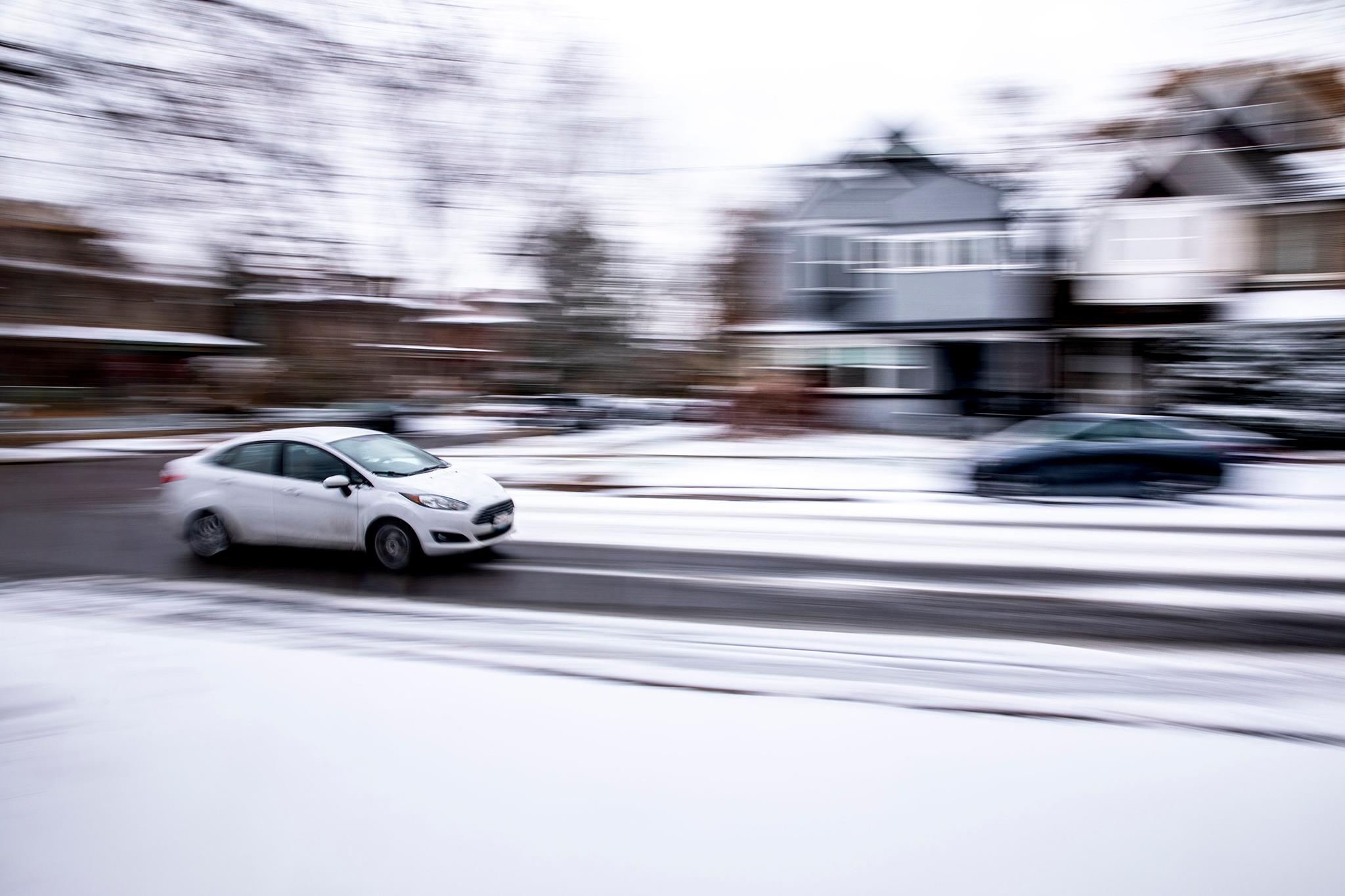We have definitely entered snowy season.
Maybe you're a lifelong Denverite, or maybe you grew up in San Diego and refuse to step foot in the car at any sight of snow. Either way, AAA Spokesperson Skyler McKinley calls Colorado winter driving "a skill all its own."
With another snowy day underway, here's a refresher on mile-high driving in the snow:
Make sure you have the right tires - and if you've been ignoring your tire pressure light, now's the time to address it. Plus, check your battery.
McKinley recommends having a dedicated set of snow or winter tires. If those are too pricey or you have no place to store them, he recommends all-season tires with mud and snow designations at minimum (look for M+S on the tire), which are treated to do better at freezing temperatures.
"Having enough tread on those tires is key," McKinley said. "Having enough pressure in those tires is key. Don't ignore the tire pressure warning light, which is of course a key safety indicator."
If you're not sure if your tires have enough traction, McKinley recommends the quarter test. Put a quarter into the tread of your tire and look for George Washington's head. "If you can see really any part of the top of [Washington's] head, you don't have enough tread, you should replace those tires," he said.
In addition to tires, you should make sure your battery is in good shape because it's more likely to fail in cold weather. McKinley said AAA gets called most often to assist people with dead batteries.
Slow down and increase following distance, regardless of the kind of car you drive and type of tires you have.
McKinley cited speeding as the most common cause of crashes and loss of traction.
"Even if you've got all the right equipment, in the perfect condition, you've got to slow down," he said. "No matter how good you think you are at driving, no matter how good you think your vehicle is in winter weather."
If you do lose traction, remember to steer in the direction you want to go, refrain from slamming on the gas or brakes and move gradually.
Be extra careful on bridges and underpasses, and check state traction laws if you're headed to the mountains.
Like Denver saw a few weeks ago with the 100-car pileup on the 6th Ave., bridges and underpasses ice up first. McKinley said AAA also gets lots of calls to drivers going too fast on I-70 during snowy weather.
"It's equal parts small sedans with all-season tires and big SUVs with snow tires because a lot of this is just reckless driving behavior," he said.
In case you're heading west, remember that I-70 from Dostero to Morrison has traction laws in place from Sept. 1 through May 31, and that the Colorado Department of Transportation can implement traction laws elsewhere on state highways during storms. These laws require drivers to have one of the following:
- A four-wheel drive or all-wheel-drive and 3/16-inch tread depth
- Tires with mud and snow designation and 3/16-inch tread depth
- Winter tires and 3/16-inch tread depth
- All-weather tires and 3/16-inch tread depth
- Chains or another approved traction device
In the city, keep an extra eye out for cyclists and pedestrians.
Both groups will have limited visibility in the snow, with cyclists and pedestrians extra bundled up with hats and scarves. Plus, there's the increased risk of cars losing traction.
"Too often we accuse pedestrians or bicyclists of not doing enough, when in reality it's the cars that are causing the deaths, and it is very, very rare that a pedestrian or bicyclist is to blame for what happens out there," McKinley said.
In cold weather, McKinley also stressed the importance of thinking of others while driving, and that when crashes go up statewide, insurance premiums can rise for everyone. And it's already been a very deadly year for traffic deaths.
"What we really have is a selfish driving epidemic," he said. "When you get behind the wheel, you really only think about yourself, which is why you speed, which is why you might text, which is why you do all the bad behaviors that could lead to a crash, but that selfishness costs us."













